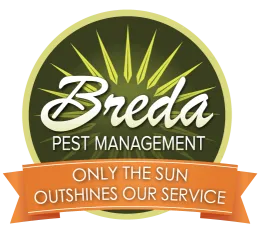A rodent infestation in your home can be absolutely disastrous, both in terms of the diseases they spread and the cost of repairs. Unfortunately, in the winter months, it can be easy for many homeowners to unknowingly make themselves a target for rodent invaders.
If you want to save your home from a costly and dangerous rodent infestation, the key is prevention. The earlier you can identify a problem, the sooner and more effectively you can solve it, so it pays to know the warnings signs beforehand.
In this blog, we'll take a look at six of the biggest early indicators of an infestation, what you need to be on the lookout for, and next steps to take if you find evidence of rats and mice in your home.
1. Odor
One of the first signs that many homeowners notice that could indicate a rodent infestation is a pungent, musky odor throughout the home.
When rodents invade a home, they make a considerable mess, leaving droppings and urine all over the nest site, and sometimes outside it. To make matters worse, when a mouse or rat is about to die, it will often retreat into far back corners to die alone, leaving the smell of its corpse. And of course, there's the rodents' natural body odor to consider.
Because of these factors, homes suffering from rodent infestation commonly have a heavy, pungent, musky stench throughout. If you've suddenly started picking up on unexplained bad smells, or pets with strong noses have unexplainably active and excited in certain areas of the house, a nearby rat nest could be the source.
2. Tampered Food Packaging
One of the biggest reasons pests break in is to find food. In the colder months when food in the wilderness becomes scarce, pests like rats and mice are naturally drawn to homes as much for the warmth and shelter they provide as for the potential food that could be inside. And once they've made the treacherous journey inside, wrappers won't be enough to stop them from eating.
Rodents are notorious for breaking into sealed food sources using their powerful gnawing teeth to rip open plastic containers to get into foodstuffs. While they probably won't be able to eat all your food, anything they find can inedible or even dangerous to consume, and the FDA goes into great detail about the health risks that tampered food items can carry.
Inspect the packaging on every piece of food in the pantry for any holes or signs of chewing, especially to likely targets like pet food bags, and start moving food items into pestproof containers as an added precaution. If you find any food with ripped or torn wrapping, throw it out and contact a pest control professional to see if rodents might be the cause.
3. Droppings
While you will probably smell their droppings before you see them, finding rodent droppings in or around your home is a common sign of a severe infestation. Like tampered food packaging, rodent droppings are both a warning sign and an active safety hazard, as rodent fecal matter can spread diseases including hantavirus, salmonella, rat-bite fever, and even bubonic plague.
Droppings usually resemble small brown grains or rice, but can vary in size based on species: rat droppings are generally around ½-¾ inch long while mice droppings are about â -¼ inch long. These can be anywhere in the house, but be on particular lookout for droppings in the attic and basement.
4. Grease Smears
Rats and mice have grease in their fur that leaves damaging marks on any pieces of wood or siding they come into contact with. If they're using the same hole to get in and out, the grease buildup can easily spread to become costly and unsightly problem areas.
As you inspect your home, check the walls and sidings for any discolored areas that could be attributed to rodent rubbing. If you've noticed any discolored areas inside or outside the home, especially on baseboards or near any holes or tears, they could be from rodents.
5. Signs of Gnawing
Mice and rat teeth never stop growing, so they are constantly gnawing on objects to wear them down. As with grease marks, the longer an infestation is present and the more times rodents pass through a particular area of your home, the worse the damage will be.
Look for any gnaw marks on wires, cardboard boxes, furniture, and any wooden items. In the attic, pay attention for chewed or ripped-up insulation, as this is a common indicator that mice have been tearing into it to make nest materials.
Like food, rodents also need a constant water source, so look out for chewing around pipes. While there are a number of pests that like to gnaw on wires and pipes, rats are the worst offenders. Examine the coverings on any wires or pipes you can find around the house. If the internals are exposed, it may be time to hire a professional to safely handle the problem.
6. Live Rats or Mice
While there are a number of signs that might indicate an infestation, seeing a live rat or mouse in the home almost guarantees one. Rats and mice in the home are the most active at night, so if you see one in the daytime usually means that the nest has become overpopulated - meaning a big mess for you to clean up.
If you see a live rat or mouse in your home, it's time to get a licensed and certified pest control professional on the case as soon as possible.
For more information about the dangers of a rat or mice infestation in your home as well as strategies you can use to protect yourself, download our free informative guide, How to Protect Your Attic from Rats & Mice This Winter, and take back your home today!
We offer rodent removal services if needed, so give us a call today!




